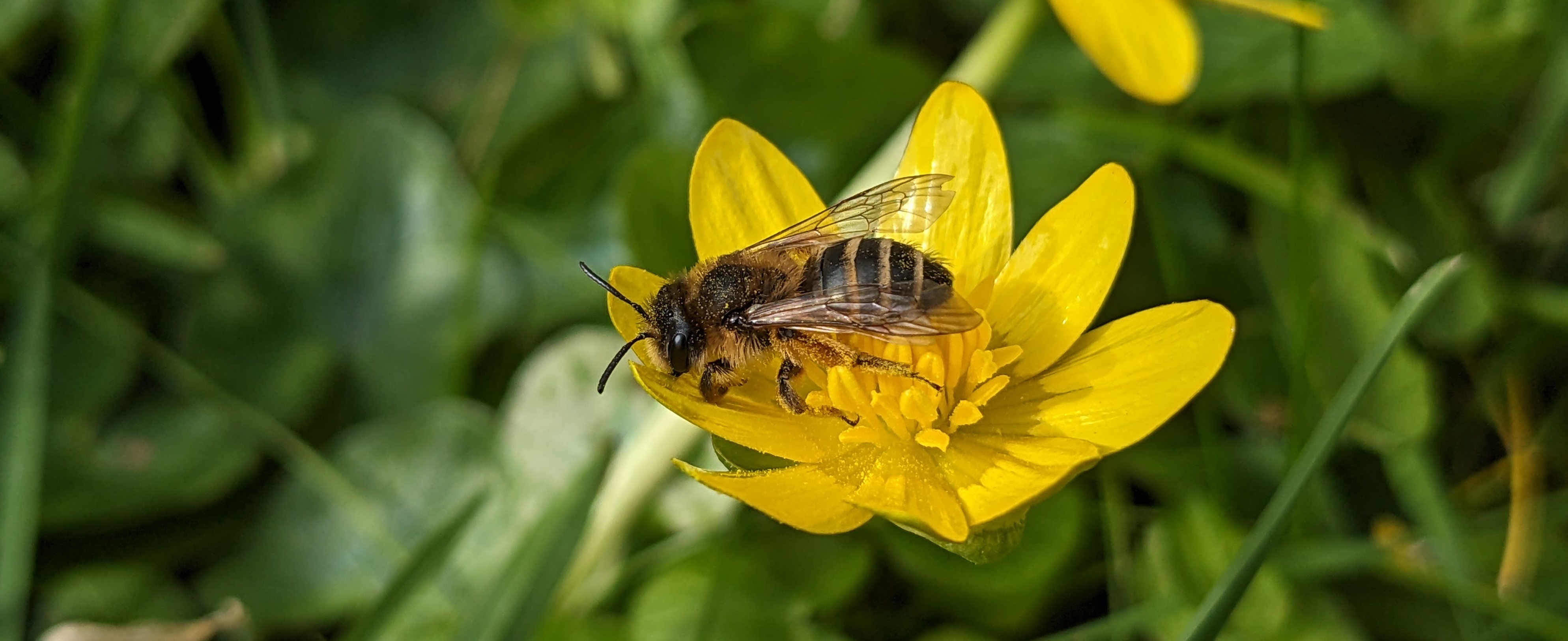
Celandine providing early nectar, March 2023 (photo: George Ashton)
INSECTS AT THE COMMUNITY WOODLAND
By Sue Ashton
Meadow Grasshopper
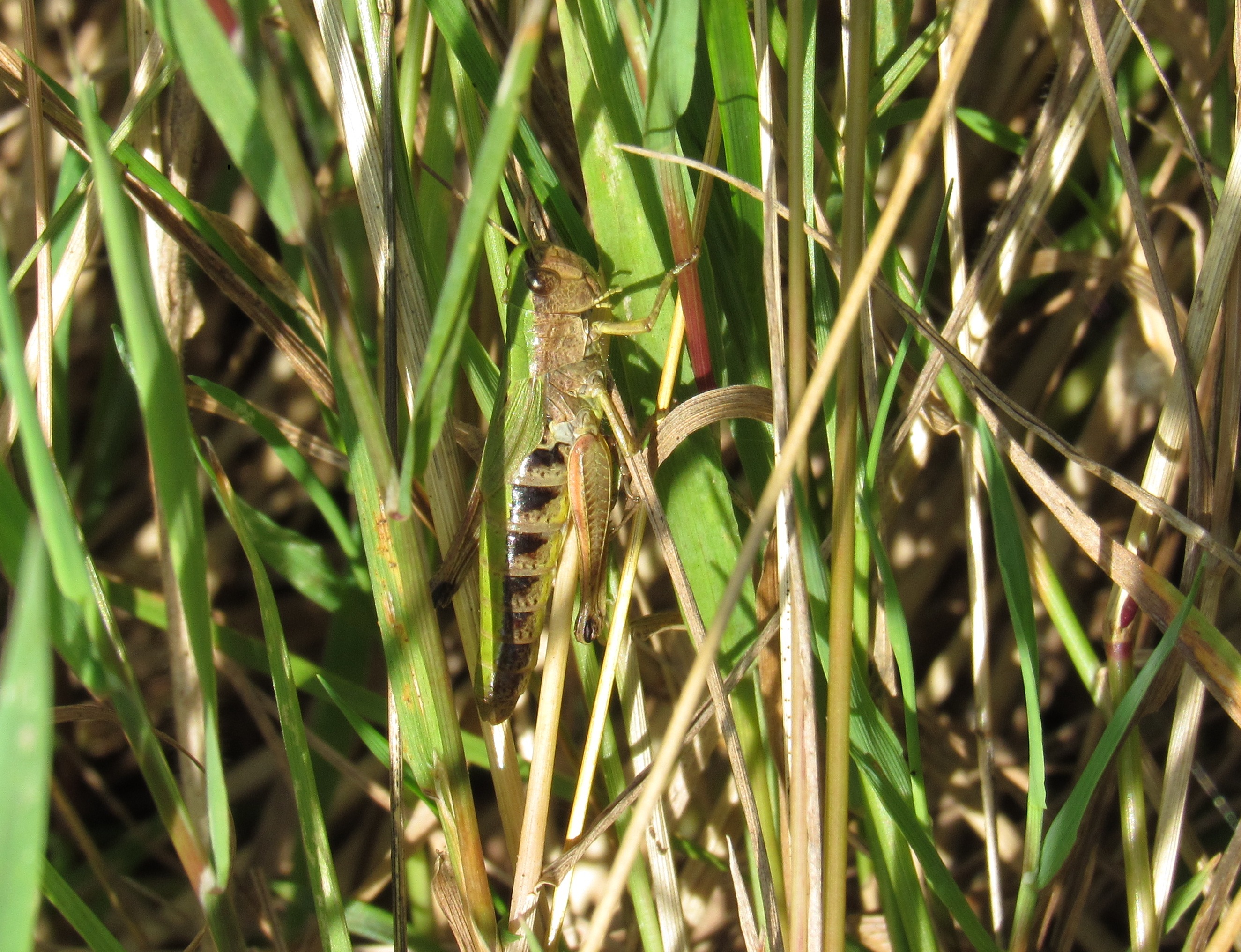
The Meadow Grasshopper is one of the most common grasshoppers in the UK. They hatch out of eggs as tiny versions called nymphs.
Grasshoppers eat a wide variety of vegetation and are eaten by frogs, toads, lizards, birds and some rodents.
They are mainly active by day and make their song by rubbing a leg and a wing together. They are the only UK grasshopper that is unable to fly (photo Sue Ashton).
Dark Bush Cricket
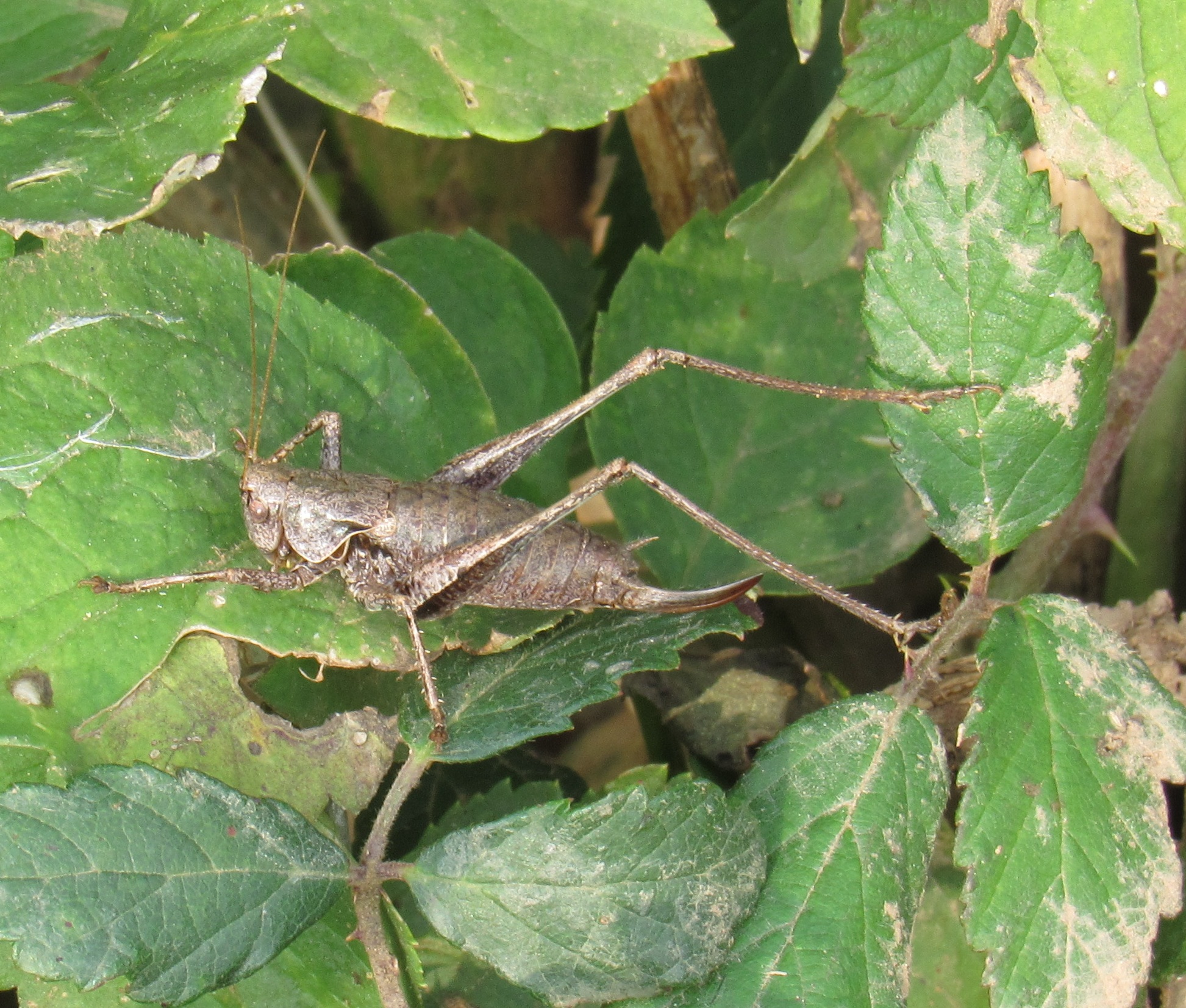
Crickets are similar to grasshoppers, and female grasshoppers and crickets both have an upturned ovipositor on their rear end which they use to place their eggs into the ground (seen clearly in the picture). But while grasshoppers have two short antennae which point forward, crickets have very long antennae that may sweep backwards over their body.
While grasshoppers are herbivorous and are more active in the day, crickets are omnivorous and tend to sing at dawn and dusk. Grasshoppers and crickets can often be heard rather than seen but you may occasionally see one jump in the vegetation (photo Sue Ashton).
Hoverflies
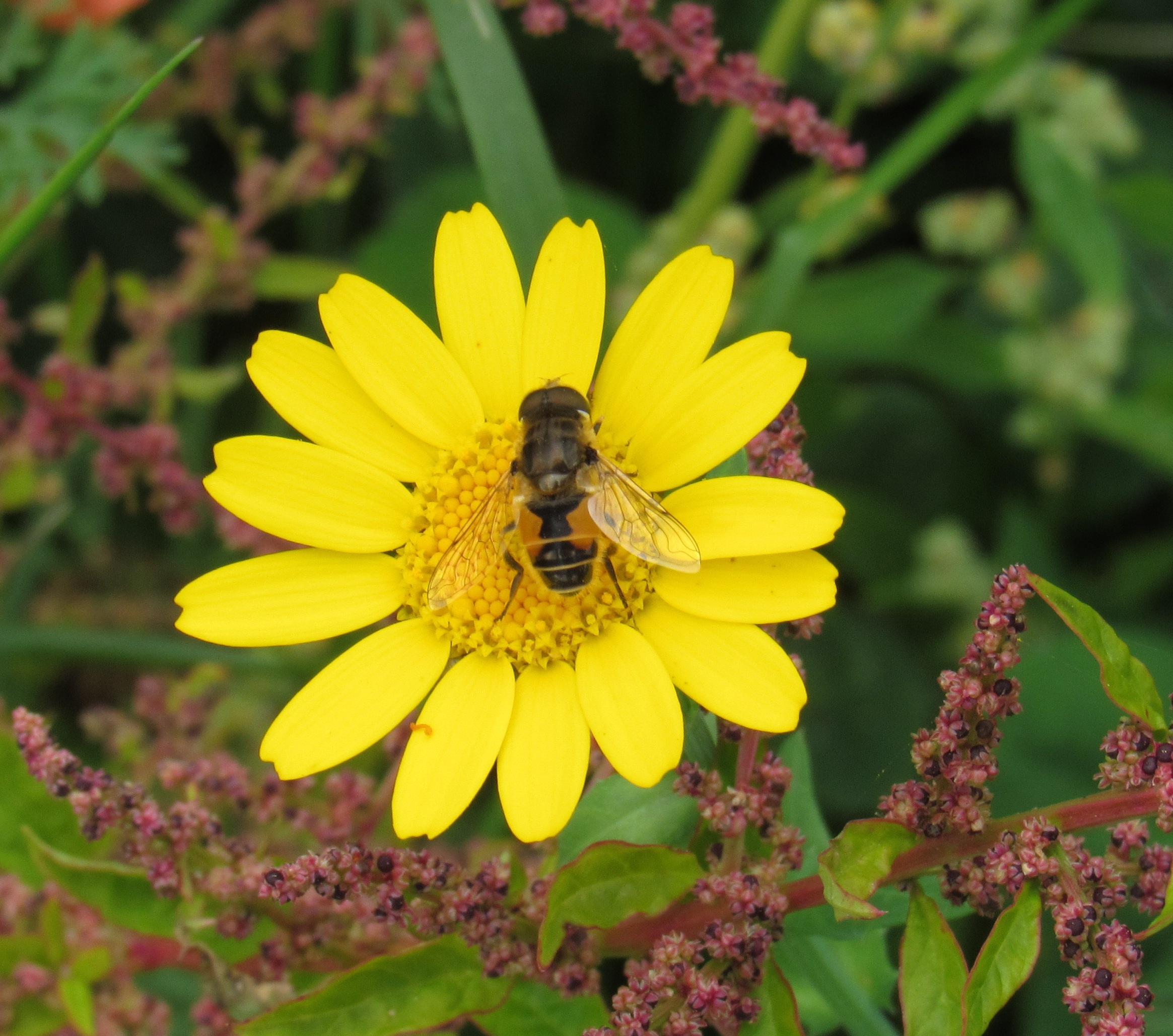
There are approximately 250 species of hoverfly in Britain. Some look similar to bees or wasps, but they do not sting. Hoverflies can be found on many types of open flower or hovering in flight. Their ability to dart suddenly helps them to escape predators such as birds and dragonflies.
The most common hoverfly seen in the UK is the marmalade fly.
Whilst feeding on flowers, hoverflies also pollinate plants, and their larvae eat aphids so are excellent for pest control (photo Sue Ashton).
Red Soldier Beetle
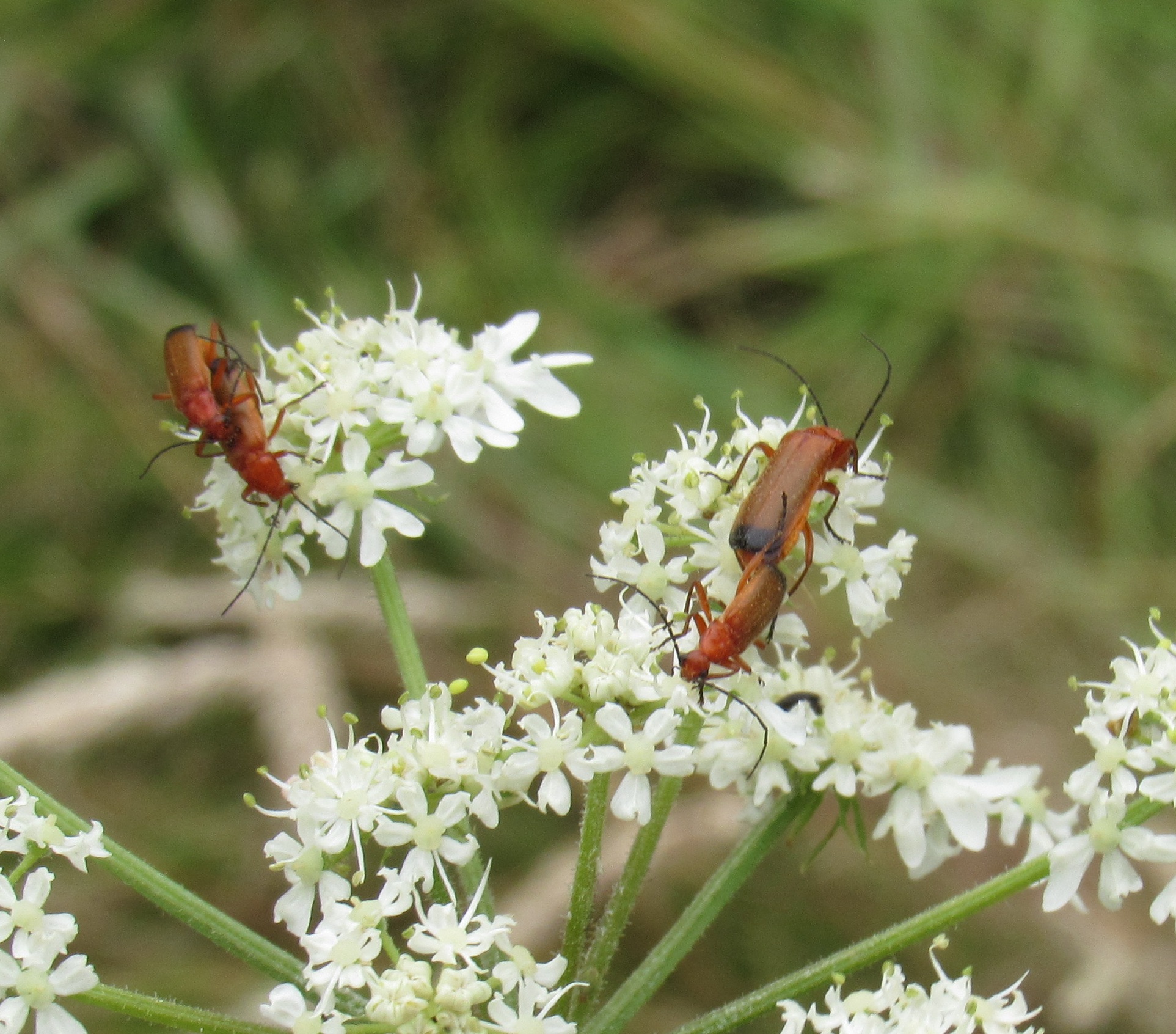
These beetles may be found on any open-structured flowers in any setting, where they feed on nectar and spend most of the summer mating.
Adults eat aphids and nectar. The larvae feed on slugs and snails. Numerous soldier beetles can be spotted at the woodland in summer (photo Sue Ashton).
Shield Bug
As the name suggests, this insect is shaped like a shield. Both larvae and adults feed on plant sap. They are commonly found wherever there are herbaceous plants and they are sometimes known as 'stink bugs' as they can give off a bad smell to deter predators.
Shield bugs are not beetles, but are true bugs, which means they have a mouth shaped like a straw with which they suck up plant juices. Shield bugs overwinter in leaf litter(photo Tony Hoskin).
Ladybirds
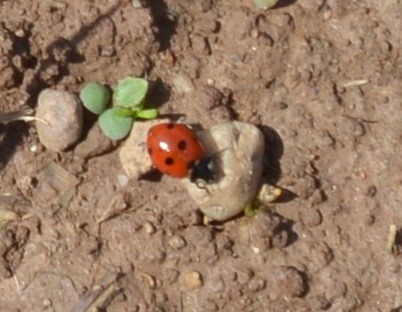
Ladybirds are common and well-known beetles that are often seen in gardens usefully eating aphids. The 7-spot ladybird (right) is frequently seen, but there are many other colour variations.
An invasive newcomer is the Harlequin Ladybird (below) which was first identified in Britain in 2004 but has since spread very widely. It is larger than a native ladybird and can eat native ladybird larvae so may present a problem to our native ladybirds in time.
It is very various in colour, but two common forms have many spots on an orange background or just two or four red spots on a black background.
For help with identification, see the UK Ladybird Survey’s website https://www.coleoptera.org.uk/coccinellidae/home
(photosTony Hoskin )
Hornet
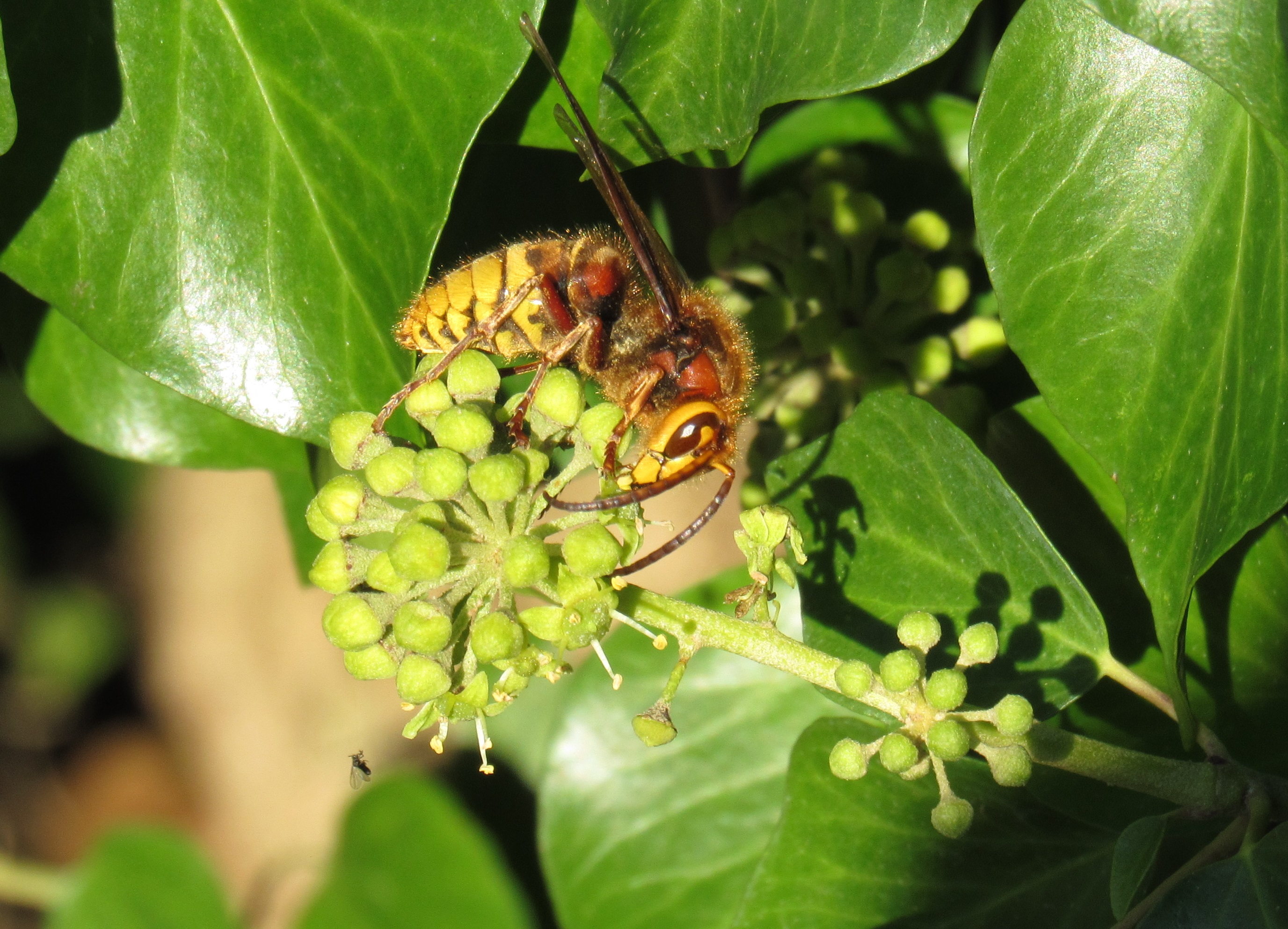
The UK is home to one hornet, the European Hornet, which has been seen at the woodland. It is like a very large wasp with a yellow stripey abdomen. It preys on large insects such as beetles, dragonflies, bees and butterflies, but also eats sugary foods such as fallen fruit (photo Sue Ashton).
The non-native Asian Hornet is an invasive species that is a serious threat to bee colonies and should be reported if seen. It is slightly smaller and much darker bodied than the native hornet (see https://www.wildlifetrusts.org/wildlife/how-identify/know-your-hornets). It may be seen between April and November, but most likely in August/September.
Four-spotted Orb Weaver
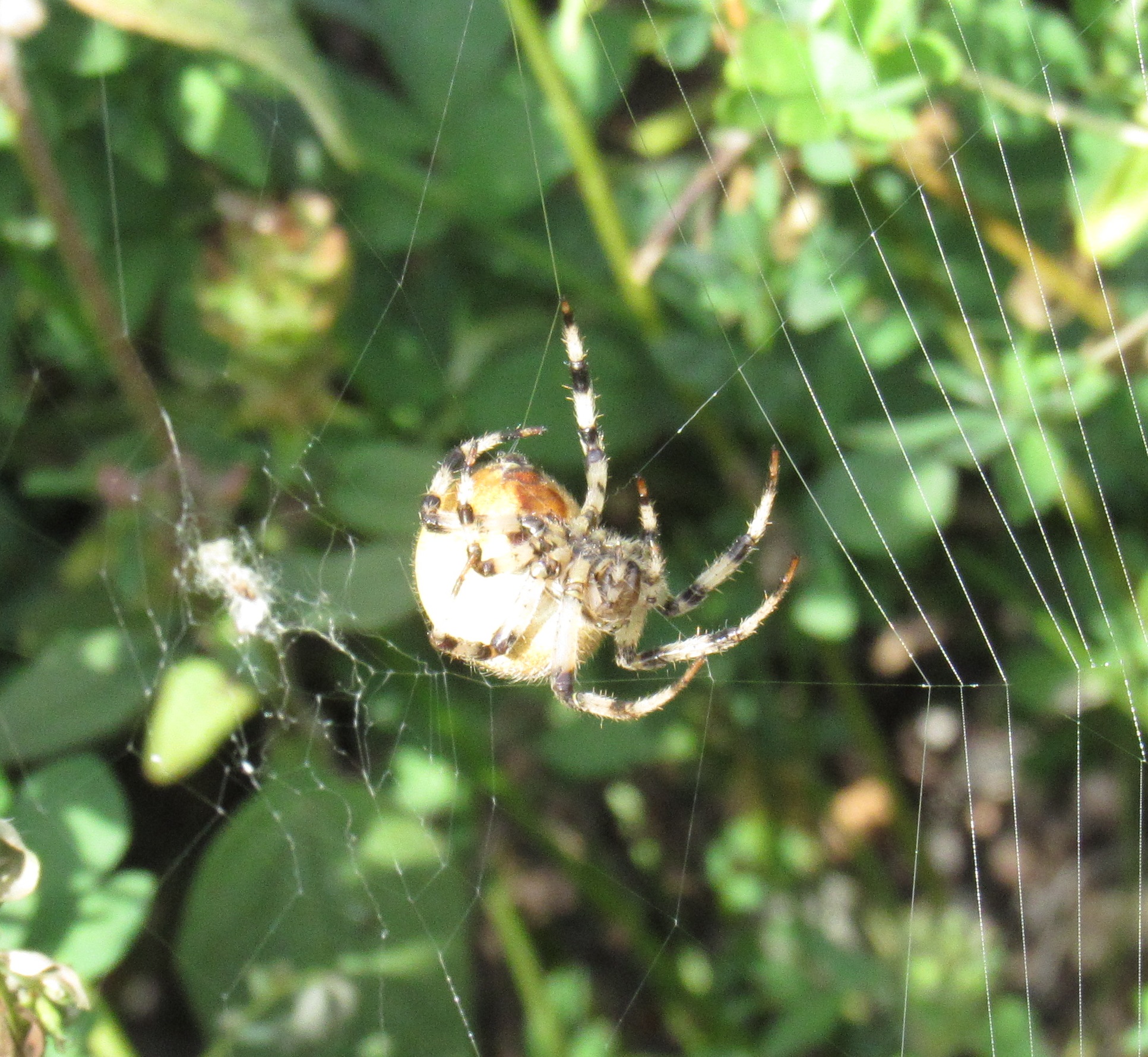
Several of these spiders have been seen on the ‘butterfly bank’ making webs to catch Meadow Grasshoppers. They spin their webs close to the ground and often build a little funnel shape at the edge of the web in which to wait for their prey.
The females are larger than the males and have spherical bodies. They can be quite variable in colour as they can change colour to match their surroundings but always have four spots on the back of their abdomens (photo Sue Ashton).
Cucumber Green Orb Spider
This spider makes a web between foliage to catch flying insects, but relies on its colour for camouflage rather than making a hideout at the edge of the web.
Adults can be seen between May and July with females being seen into September. This one was taken in July 2019 (photo Tony Hoskin).
Wolf Spider (Pardosa amentata)
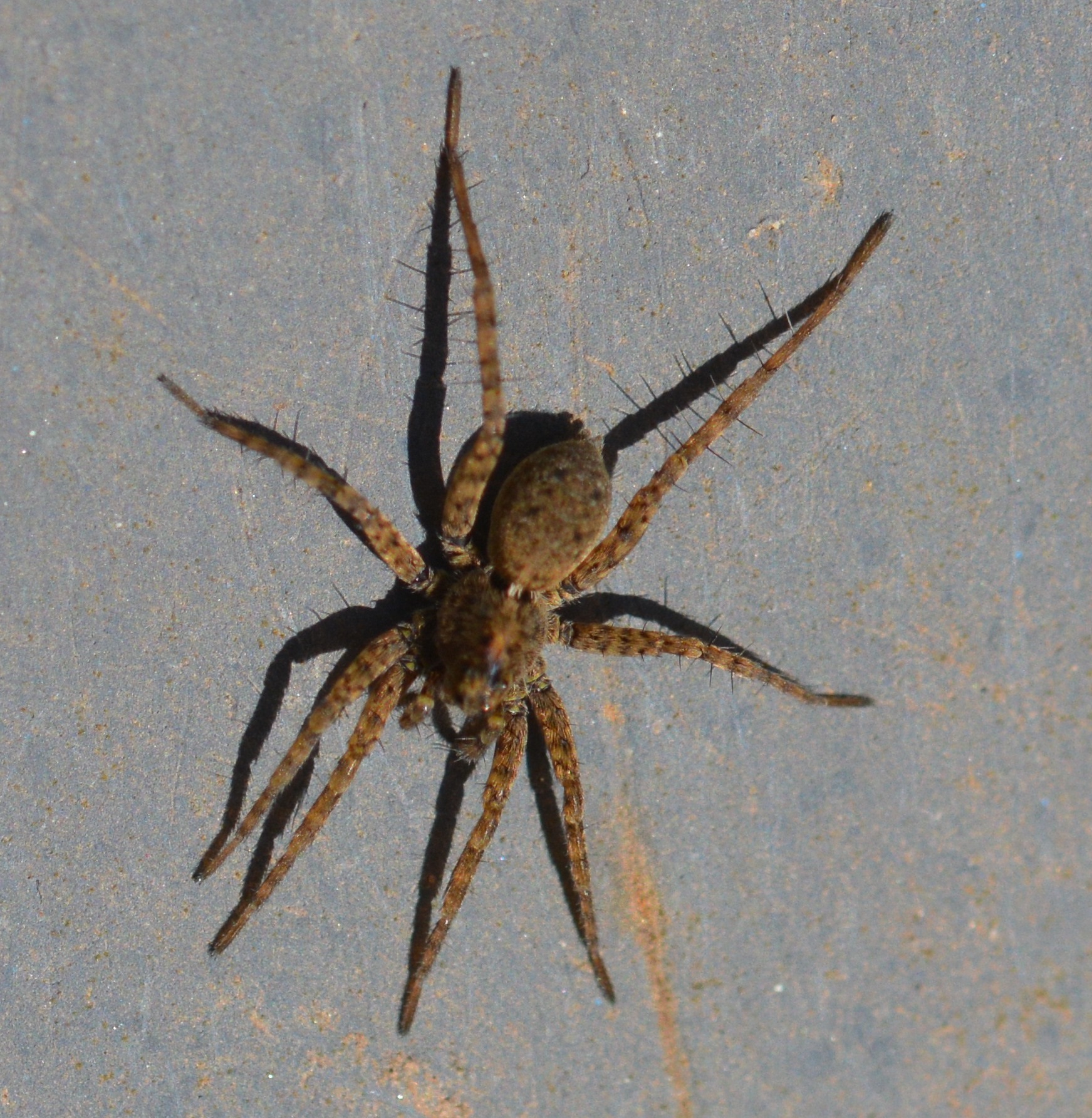
This is a common spider, especially in damp areas, and is found in a wide range of habitats, including gardens, grassland, woodland, hedgerows, marshland, almost anywhere.
It doesn’t spin a web but catches it’s prey by stealth and speed on the ground (photo Tony Hoskin).
Cranefly
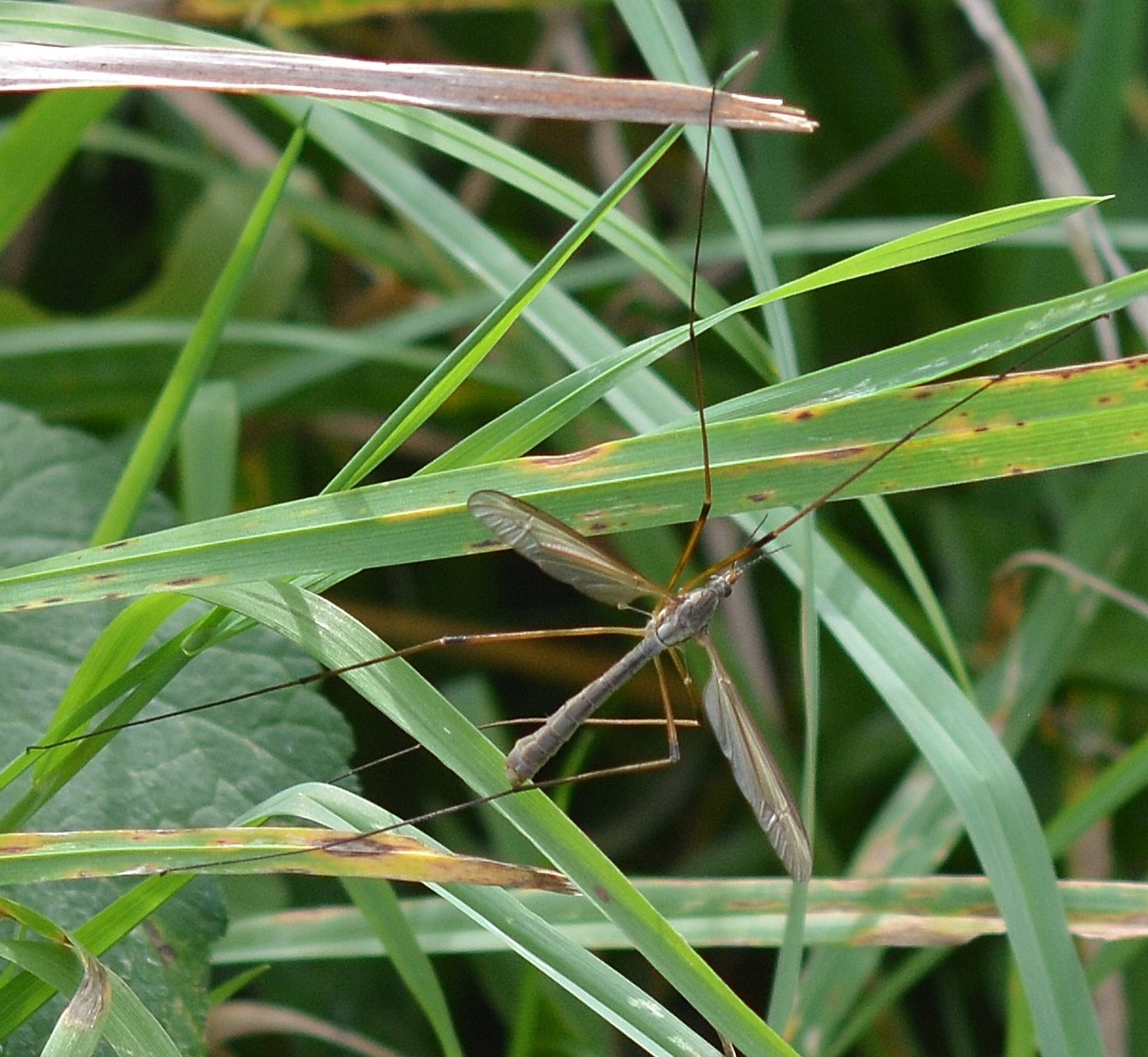
This gangly, long-legged flying insect is popularly know as a Daddy Longlegs. It is widespread and commonly seen in gardens and fields in late summer and autumn. As they come to light, they are frequently attracted indoors.
The larval stage of the Cranefly is known as a leatherjacket and lives underground, feeding on roots. The adult male Cranefly (pictured here) has a blunt-ended body, whereas the female’s body ends in a point which is her ovipositor for laying eggs in the ground (photo Tony Hoskin).